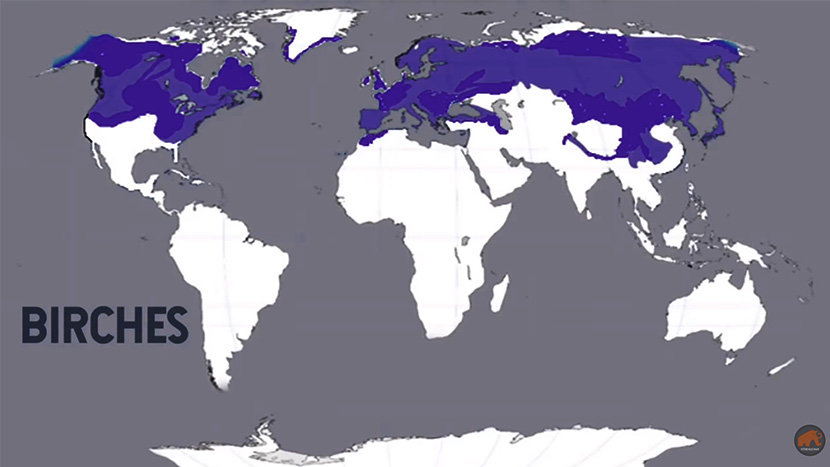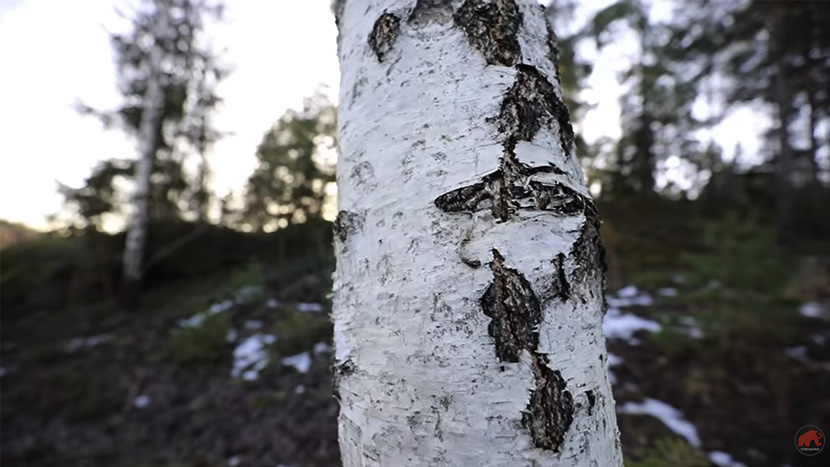Intro to Birch Trees (In Real Life)
Have you ever wondered what fire starter, aspirin, toothpaste, acne creams, and a Minecraft house have in common? Well, believe it or not, they can all be made with parts of a birch tree! This incredible family of trees are really important for building – in video games and real life – and also contain compounds that are useful in medicine, toiletries, candies, and even traditional medicinal teas. If that wasn’t enough, they can be extremely helpful in survival situations too – as they make for great tinder! All around, this is an iconic tree for those of us in the Northern Hemisphere, and one we think you should know more about!
What is a Birch Tree?
Birch trees refer to those found in the genus Betula, which belong in the family Betulaceae. Birch trees are abundant and common in the Northern Hemisphere, with about 16 species in North America alone, and some 60 species in the world! These trees grow quickly, and have shorter lifespans than similar trees.
Some examples of birch trees from North America are: paper birch (Betula papyrifera), yellow birch (aka golden birch, swamp birch, silver birch… – Betula alleghaniensis), and sweet birch (AKA black birch, cherry birch.. and more – Betula lenta). Though common names can clearly get a bit confusing, because the same species will have different names depending on where you are or who you talk to, there are quite a few different birch tree species in your area. Despite the variety of species, since they belong to the same family, they share many properties and can be identified in similar ways.
The interesting exception to this “easy identification” however are the birch trees that grow in the tundra. These birch trees only grow as high as a very small bush, and are called – maybe you can guess it – dwarf birch! There are different species of dwarf birch in different areas, such as Betula nana, found in the arctic tundra, and Betula glandulosa which is more common in alpine tundra high in the mountains.
Putting these little dwarf trees aside, since most birch trees have a lot of the same properties, and look very similar, we are going to talk about “birch trees” in general terms from here on!

Identify Birch Trees
Birch trees are possibly one of the easiest trees to identify because of their distinct bark. Though younger birch trees will be brown in color, adults will often have this distinct white color with many black protruding spots all over them. Some birch trees however have a more gray or yellow color, but they will still have darker raised marks all over them and flaky or “paper” bark that can be pulled off by hand. For other indicators, the leaves are oval to triangular in shape, toothed, bright green in summer, and yellow in autumn. The flowers are catkins – which are drooping clusters of tiny flowers – of various colors, usually in brownish-red tones. You can also break off a small branch and smell it, and even taste a bit, and you will notice a minty wintergreen essence, this is because birch has the same compounds of a wintergreen plant and in fact, sweet and yellow birch are used to make wintergreen extract!
Uses for Birch Trees
Birch trees are inherently important to the ecosystem in which they belong, but they are also very useful to humans. Birch can be used for many things, some examples including:
- The bark makes for great tinder when building a fire because it is both dry and flaky, and contains oils (just do not strip off too much as you can hurt the tree!).
- The wintergreen flavor in gums and toothpaste used to come from birch trees, although now it is normally made artificially.
- Birch tree tea made from bark, or newer twigs and leaves makes medicinal teas
- Wintergreen oil, an essential oil, is made from birch trees
- The wood and bark was traditionally (and still is) used to make canoes, for building, making various objects such as baskets and roof tiles, and even in bows and arrows.
Medicinal Properties of Birch Trees
Birch trees contain a compound called Methyl salicylate, which is both what gives them that “minty” smell and is responsible for most of their medicinal properties. The tree produces this compound to use in plant communication and for defense against pests and disease
Methyl salicylate is a methyl ester of salicylic acid, which is commonly used to treat acne, and is a precursor for acetylsalicylic acid, which is the key ingredient of aspirin.
Birch tree tea, or oil of wintergreen is good for various things, such as:
- It is anti-inflammatory
- Can reduce acne and work as a great toner for the skin
- The tea is used to calm fevers
- Help with stomach aches
- Topical pain relief (wintergreen oil applied to the skin
Caution About Birch Trees
There are few possible negative effects around drinking birch tree tea or using the oils, however, just how taking a lot of aspirin could kill you, concentrated oil of wintergreen is dangerous and should be used with caution. Though, in terms of tea, you would have to drink quite a lot to be sick.
If you are pregnant, breastfeeding, or on other medications, it is always best to talk to a medical professional before you use it as a medicine. And it is best to not use any of it on babies as even just a few mL could even be fatal.
Again, we want to remind those who want to harvest from birch that bark should be harvested in small quantities if at all, because taking too much bark can hinder growth and potentially even kill the tree! Often, tea is made from young branches and new leaves instead.
Birch Trees and Hoof Fungus
The fascination doesn’t stop with the actual tree itself, but runs a bit deeper. This Is because birch trees are also the host plant for hoof fungus! This is an incredible polypore mushroom that has been used by humans for thousands of years as tinder for fires and in medicine. This mushroom is claimed to be especially good for staunching blood, and modern medicine is revealing its antimicrobial properties among other benefits. This little fungus is also well-known as the mushroom that makes amadou (mushroom leather).

Birch Trees in Minecraft
As a fun extra, we thought we would chat about the popularity of this tree in the virtual world as well! Birch trees are a pretty important tree in the game Minecraft! According to the experts, in this case Rob’s son, it is one of the first trees that you can harvest because you can peel it apart with your hands, no ax required. This is likely an allusion to the fact that you can peel off birch bark to use as tinder, for making things, and in teas. Interestingly enough, one of the key creators of Minecraft was Swedish, and since this tree is so iconic there, it is no wonder that they made it a big part of the game!
So, next time you see a birch tree, don’t forget to try a small taste, and think about all the amazing things it can do for us! Last, if you have had enough of collecting virtual bark, or reading about birch trees in books, and want to learn about hands-on “IRL” (or in real life as the kids would say), make sure you check out our Survival Course page, and sign up to our newsletter for updates on the next available dates!

